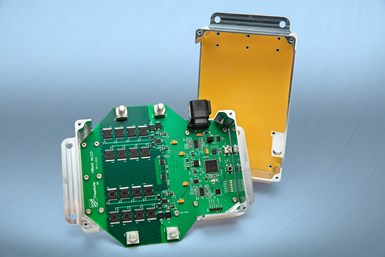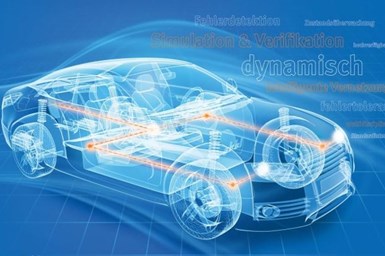Developers Aim to Diffuse AV Short Circuits
An alternative to full electrical redundancy
#electronics
Redundant actuators and controllers are key enablers for automated driving systems to ensure that safety-critical systems—braking and steering—continue to function if there is a short circuit or another problem.
But they also add weight, packaging complexity and costs.

Electronic disconnect module (Image: Fraunhofer Institute)
To help minimize such tradeoffs, researchers from Germany’s Fraunhofer Institute for Reliability and Microintegration (IZM) are partnering with the HiBord consortium to develop a simple disconnect device that builds in safeguards without requiring a completely redundant electrical system.
HiBord, which is funded by the German Ministry of Education and Research, includes BMW, Bosch, Siemens, smartCable and wiring specialist Kromberg & Schubert.
How It Works
Currently, faults are isolated by shutting down the affected component to prevent uncontrolled failure throughout the electrical system, Fraunhofer notes.
The HiBord system features 16 metal-oxide-semiconductor field-effect transistors (MOSFETs) to switch or block large electric currents as needed.

(Image: HiBord)
If the base threshold of 180 amperes is exceeded, which typically indicates a short circuit, the electrical switch opens to quickly shut off power and reboot. The disconnect device can detect a fault within 10 microseconds and requires only 300 microseconds more before tripping, which the partners say is 60 times faster than current fuse systems.
This provides the necessary redundancy to temporarily operate safety-critical features.
“With our new module, part of the onboard electrical system continues to function as before,” explains Phillip Arnold, a research associate at Fraunhofer. He says this would be sufficient to safely maneuver a vehicle to the side of the road or a parking lot.
Amped Up Performance
During testing, the new module showed it could isolate currents as great as 700 amperes without spreading the problem and short-circuiting the entire system, according to the researchers.
With the higher capability, the MOSFET switches typically are operating at well below their maximum permissible load. As a result, they are said to have a “significantly longer” life than conventional systems.
What’s Next?
Initial tests have been limited to BMW’s tiny i3 city car.
But the partners say the technology could be scaled up and adapted to virtually any EV. No timeframe was listed for commercialization.
RELATED CONTENT
-
Mustang Changes for 2018
On Tuesday Ford unveiled—using the social media channels of actor Dwayne Johnson (this has got to unnerve some of the auto buff book editors)—the 2018 Mustang, which has undergone some modifications: under the hood (the 3.7-liter V6 is giving way to a 2.3-liter EcoBoost four, and a 10-speed automatic is available), on the dash (a 12-inch, all-digital LCD screen is available for the dashboard), at the tires (12 wheel choices), on the chassis (MagneRide damper technology is being offered with the Mustang Performance Package), and on the exterior (three new paint colors). And while on the subject of the exterior, there are some notable changes—a lower, remodeled hood, repositioned hood vents, new upper and lower front grilles, LED front lights, revised LED taillamps, new rear bumper and fascia.
-
About the 2019 Toyota RAV4
Last year Buick sold 219,231 vehicles in the U.S.
-
The Genovation GXE: >220 mph and Street Legal
A 2019 Corvette Grand Sport has a starting price on the order of $66,950. The Genovation GXE, which is predicated on the Corvette Grand Sport, will set you back some $750,000.










